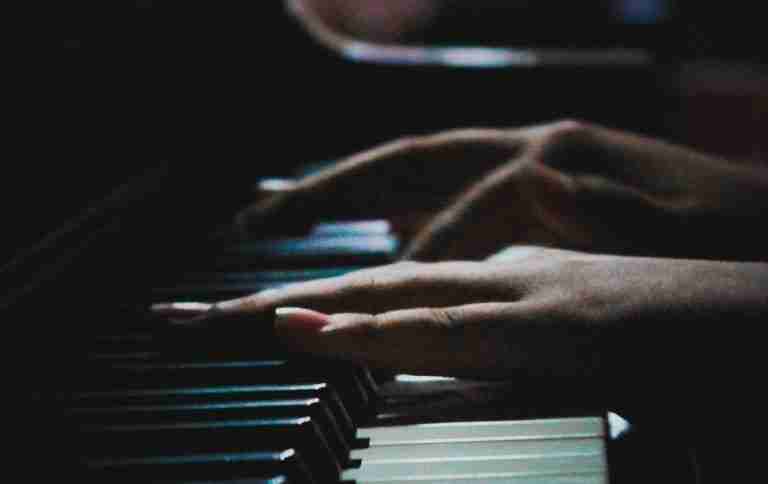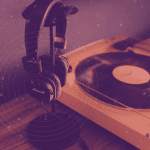Learning tunes should be fun. If ever there was a secret to expanding your repertoire of tunes this would be it. You’re more likely to pursue an activity that’s exciting, interesting, and challenging rather than one that feels like an annoying chore. At the end of a long day you’re going to put the hours into a pursuit that’s an extension of the activities that you already enjoy.
For musicians, one of the most enjoyable things you can do with music is listening. If you’re reading this right now and are serious about improving as an improviser, chances are you’re already listening to records as much as you can.
Listening truly is the starting point for your musical improvement and your growth as an improviser.
One misconception surrounding musical improvement however, is that you can only practice if you’re in a practice room with your instrument in hand. This is simply not true. The learning process can happen anywhere, instrument or no instrument, as long as your ears are open and you’re focused on improvement.
Below I’ll show you how to turn your next listening session into some time spent learning tunes – a two birds one stone approach. You may not realize it now, but you can actually figure out and memorize tunes at the same time you’re checking out your favorite records.
How is this possible? The answer lies at the piano. The piano or keyboard is one of the greatest tools we have in learning the ins and outs of improvisation. When you sit down at the keyboard you have an easily accessible way to play melody, harmony, chords and bass lines right at your finger tips.
You could be a horn player, a drummer, a bassist, a singer…anyone can benefit from spending some time with the piano and exploring a tune. Using the piano as a listening tool as you check out some records is a great way to expand your repertoire of jazz standards and improve the fundamentals of your musicianship.
Benefits of learning tunes at the piano
When you sit down at the piano and pull the information off of a recording using your ears as a guide, you’re going to gain some invaluable skills that are essential for every serious improviser.
Here are just a few:
-
Improved listening skills – the ability to focus on and identify a specific part of the music
-
Ear training practice – recognition of intervals, melodic lines, chord tones, chord quality & progressions
-
Development of Basic Piano skills
-
Ingraining the standard repertoire – Familiarity and understanding with a tune before playing it on your primary instrument
-
Theoretical understanding – (cultivated aurally) of the melody, form and progression of a tune
You are essentially immersing yourself in the sound of the music and using the keyboard as a tool for sorting everything out. As you spend time deconstructing the music piece by piece, you’ll begin to understand the tune in an intimate way that’s impossible with a lead sheet.
3 Steps to learning a tune at the piano
To properly learn a tune you need to focus on three primary areas of the music:
-
Learn the Melody – The first step to learning any tune is figuring out the melody by ear. However, before you rush over to the piano, you need to start by ingraining the melody in your ear – without an instrument. The easiest way to accomplish this is by singing. Listen to the melody on repeat until you can confidently sing it along with the recording note for note. Then you can then go to the piano and figure out each note of the melody on the keyboard.
-
Learn the Bass Line – Next you need to focus on the root movement of the chord progression. This will require some selective listening on your part. Focus your attention on the bass player or the bass notes on the recording. These notes will outline the root movement of the chord progression. Pick out the bass notes on the keyboard with your left hand.
- Identify Chord Quality/progression – In most of the music that you listen to, regardless of style, you’re going to encounter four types of basic chord qualities: Major, minor, Dominant (V7) and half-diminished. If you can identify each of these qualities you’ll be much more successful at hearing and figuring out chord progressions. As you carefully listen to each chord, use the piano to check your ears.
How it works
To see this process in action, let’s use the tune I Hear a Rhapsody as an example.
*As you figure out each part of the tune from the bass up to the melody, it’s necessary that you sing the musical information that you’re trying to learn. This will create a physical connection directly from your ear to the sound on the recording.
Melody
Step one is learning the melody. Start by singing the melody along with the recording. Get each note and interval in your ear, then go find those melody notes on the piano. Once you have the melody line figured out at the keyboard, play it along with the recording until you have it down.
**Hearing the specific notes on the recording may prove difficult as a result of the tempo, arrangement or recording quality of the track that you’re listening to. Using a program like Transcribe! that slows down the recording for you is an invaluable tool.
Bass/ Root movement
Now let’s take another listen to this track, but this time we’re going to focus exclusively on the bass notes. Slow down the recording and try to focus on the root movement from one chord to the next.
If the bass is walking under the melody, direct your attention to the notes on beats 1 and 3, these are where the root notes will be played.
Once you’ve figured out the bass notes, play them on the piano along with the recording to ingrain the root movement in your ear.
Chord quality/ progression
OK, now that you know the melody and can hear the root movement of the chords, it’s time to figure out the quality of the chords. Listen carefully to the recording once more: Does the first chord sound Major, minor, or dominant? What about the next chord?
Next listen for the relationship between the chords. Do you hear a ii-V7-I progression? Do you hear harmonic motion by a half-step? Use the root movement and melody notes that you’ve figured out as a guide.
Extra steps
Once you’ve learned the basic elements of the tune you can analyze these musical elements to understand why they work theoretically.
-
Analyze the melody – What chord tones or devices does the melody utilize?
-
Determine the form of the tune – How many bars is the tune, what’s the meter?
- Analyze the chord progression – You’ve figured out the chord progression by ear, but now look at the tune as a whole. What are the key centers of the tune? What is unique or tricky about this chord progression?
When you understand the structure and theoretical aspects of a tune you’ll be able to recognize these elements in other tunes that you’re trying to learn and access these devices in your solos.
Channeling your inner musician
Your success at learning tunes and building a repertoire of jazz standards directly relates to how well you can hear and identify the information on the recordings you listen to. Simply put: if you can’t hear it, you can’t learn it.
This is why ear training is so important and why the process of figuring out a tune at the piano is so beneficial. You’re training your ear to hear specific parts of a tune, to recognize intervals, root movement, and chord progressions. These are the skills that will propel you forward as an improviser.
In your practice, remember that everything involving your musicianship is connected. By taking the time to learn a tune at the piano, you’re ingraining these sounds in a way that you won’t easily forget. These melodies and progressions that you learn at the keyboard will remain with you even when you go back to your primary instrument.
As you sit down and listen to these tunes and work them out at the piano, keep in mind that the piano is just another tool for your inner musician, a tool that amplifies the musical skills that you’ve cultivated inside yourself.
This is also why so many great improvisers play second and third instruments. The music that they are inspired to create originates inside of them, it doesn’t matter which instrument they use to perform it. These musicians have an inner conception of what the music should sound like before they come in contact with an instrument.
It could be the piano, the drums, a bass or the human voice – it truly doesn’t matter. The sound, the time, and the melodic conception all reside in the ear of the musician. The instrument is ultimately just a wooden, metal or electronic tool that brings these sounds to life.
As you get started practicing these exercises don’t feel like you have to be able play every instrument that you come across. However as an aspiring improviser, you should develop some basic skills at the piano. Incorporating the piano into your practice as you listen to and learn tunes is a great way to develop these skills.
Make sure there is a piano around the next time you find yourself listening. It may be difficult and time consuming at first, but know that you’re improving every aspect of your musicianship in a big way.















